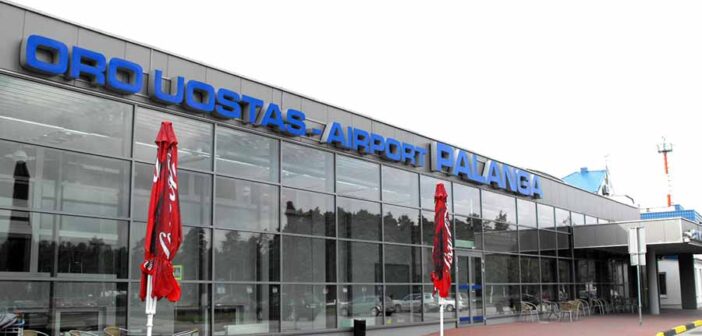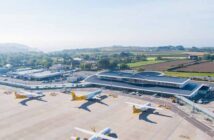Palanga International Airport (PLQ), located 7 kilometres north of Palanga’s resort town on the Baltic Sea, serves as a key gateway to Lithuania’s coastal region, handling around 270,000 passengers annually. This compact airport, the third largest in Lithuania, connects to six European destinations, including Riga, Copenhagen, and London, with airlines like Ryanair, Air Baltic, and SAS.
The passenger experience at PLQ is designed for simplicity, with a single terminal split into North and South sections, connected by short walkways. Clear signage guides travellers through check-in, security, and boarding, with staff at the infopoint (370 612 44442) assisting with queries. The airport’s small size ensures quick navigation, with security checks typically taking under 10 minutes. Accessibility features include wheelchair assistance, a Sala Amica area, and support for hidden disabilities via the Sunflower Lanyard scheme, making PLQ welcoming for all. Recent upgrades, including a 2021 runway renovation, enhance efficiency. Passengers are transported to aircraft via shuttle buses due to the absence of air bridges.
Accessing PLQ from Palanga is straightforward, with a 10-minute drive via the A13 motorway. Parking is convenient, with 580 spaces offering 15 minutes free in the covered lot and rates from €5 per day, payable by card or coin at the infopoint. Public buses (ASPO lines 100 and 101) connect to Palanga and Klaipėda for €1-€2, taking 15-30 minutes.
Taxis, available at the arrivals hall, cost €10-€15 to Palanga, though English-speaking drivers may be limited. Rideshares like Uber are available but less common. Car hire from Avis, Hertz, and Enterprise is 50 metres from the terminal. No direct train exists, but buses link to Klaipėda’s rail station for onward travel.
The airport’s layout features one terminal with two sections: North for non-Schengen flights and South for Schengen, both on the ground floor. Check-in, security, and baggage claim are centrally located, with walking times under five minutes. International arrivals process through a customs area with e-gates for EU passengers, ensuring quick clearance. The compact design eliminates the need for internal shuttles, and digital screens provide flight updates.
Delays are rare due to low traffic, but peak summer months (July-August) can see security waits of 15-20 minutes. Coastal fog or storms may affect flights, so travellers should arrive two hours early and check status via Flightradar24 or the PLQ website. The 2,280-metre runway, upgraded with LED lighting in 2021, supports medium-sized aircraft like the Boeing 737. Construction for terminal enhancements may cause minor disruptions through 2025.
Dining options are modest, with a café in the arrivals hall and an airside snack bar offering sandwiches, coffee, and Lithuanian pastries. Retail includes a duty-free shop for international travellers and a newsagent with local souvenirs and travel essentials. While limited, these options meet basic needs for the airport’s scale.
Facilities include free Wi-Fi (Wifi Palanga Airport), though connectivity can be slow, and charging points in the departure lounge. A business lounge offers a quiet space for €25, with free Wi-Fi and snacks. Family amenities include baby-changing facilities and a small play area, while a pet relief zone is outside the terminal. Luggage storage costs €10 per day, and ATMs are available. Nearby hotels, like the Palanga Spa Hotel (7 km away), offer taxi access.
On-time performance is reliable, with a 3.8/5 Airportia rating based on recent departures, aided by minimal runway congestion. Connections are limited, as PLQ is not a major hub, but flights to Riga offer transfers to over 300 destinations, with 90-minute minimum connecting times. Passengers should confirm gate assignments via airline apps.Potential delays may arise from summer crowds, weather, or ongoing construction. Travellers can mitigate risks by using the Fast Track service or booking midweek flights.




